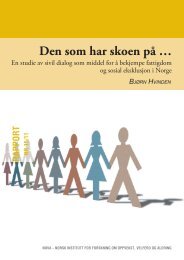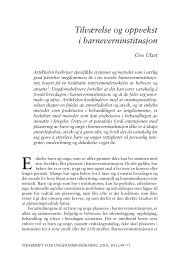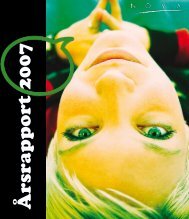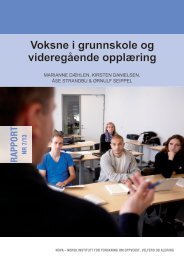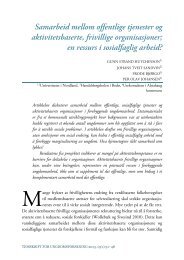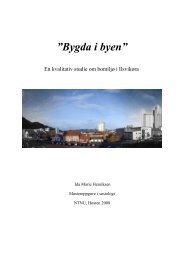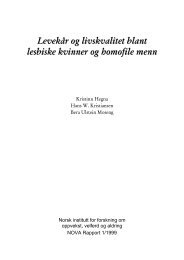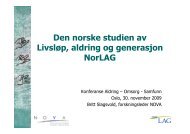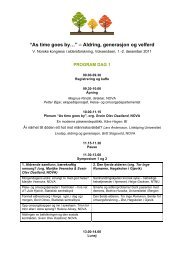Parents' socioeconomic status and children's academic ... - Nova
Parents' socioeconomic status and children's academic ... - Nova
Parents' socioeconomic status and children's academic ... - Nova
Create successful ePaper yourself
Turn your PDF publications into a flip-book with our unique Google optimized e-Paper software.
Summary<br />
The aim of this paper is to investigate the relationship between parents’<br />
<strong>socioeconomic</strong> <strong>status</strong> <strong>and</strong> their children’s performance at school. Proxies<br />
used for parents’ <strong>socioeconomic</strong> <strong>status</strong> are their educational level,<br />
employment <strong>and</strong> cultural background; <strong>and</strong> for children’s educational<br />
attainment, their grades in Norwegian, maths <strong>and</strong> English. The data were<br />
collected in the second round of the longitudinal project ‘Children’s level of<br />
living – the impact of family incomes” (Barns levekår – betydningen av<br />
familiens inntekt). A case sample was composed of children in families who<br />
lived below the poverty line in 2000, while a control group comprised all<br />
categories in the community in the same year. The poverty threshold was<br />
defined as 60 per cent of the median income. Here a subset of 499 pupils at<br />
lower secondary education is analyzed, 388 of them are in the case sample<br />
<strong>and</strong> 111 in the control group. They are aged 3 to 15, <strong>and</strong> are between their<br />
eight <strong>and</strong> tenth year of schooling. Fifty-nine per cent of the pupils in the case<br />
sample are native Norwegians, 15 per cent are western immigrants, 18 per<br />
cent are non-western immigrants, <strong>and</strong> 9 per cent are ‘mixed’, with one<br />
Norwegian <strong>and</strong> one immigrant parent.<br />
The analysis methods used are cross tabulation <strong>and</strong> ‘small population<br />
proportion’ <strong>and</strong> regression. Most parents in the case sample have a secondary<br />
level education, <strong>and</strong> the education level of the fathers was slightly higher than<br />
that of the mothers. Both parents in the control group have on average a<br />
higher education than those in the case sample. The association between<br />
parental education level <strong>and</strong> children’s <strong>academic</strong> performance was moderate<br />
in the case sample.<br />
Eighty-two per cent of the fathers (N=284) <strong>and</strong> 62 per cent of the<br />
mothers (N=369) in the case sample were employed, while employment in<br />
the control group was 85 per cent (N=103) for the mothers <strong>and</strong> 94 per cent<br />
(N= 90) for the fathers. The analysis shows a positive association between the<br />
children’s school grades <strong>and</strong> their parents’ labour market <strong>status</strong>.<br />
– Parents’ <strong>socioeconomic</strong> <strong>status</strong> <strong>and</strong> children’s <strong>academic</strong> performance – 7




